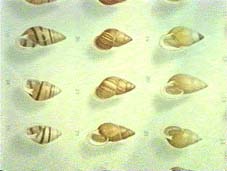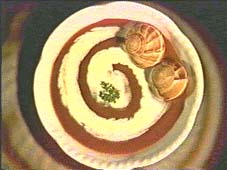


He concluded that there was no evidence that the forms and colours of Partula could be predicted from surrounding environments. Identical climatic and vegetational conditions in adjacent valleys evoked different solutions to the genus time after time. Isolation, mutation and adaptation by natural selection were the accepted reasons for such diversity. Sadly Crampton's work is now undone; work that relies on future generations of a species giving relevance to the continuation aspect of his theories and studies. So what went wrong?
Partula was not considered to be a human pest; it eats fungi on dead vegetation and was in no way a threat to agriculture on the island. It's demise came about, in a twisted tale of man's greed. Giant African Land Snails, in particular the genus Achatina are gigantic as snails go. They are particularly succulent and, providing a lot meat per creature, are especially favoured for human consumption.

It was not long before the colonial French in the Pacific, with their penchant for the mollusc family, imported these snails.
Achatina was first imported to the Indo-Pacific realm in 1803 by the governor of Reunion so that his lady friend could enjoy snail soup. Inevitably the snails escaped from his garden. Unfortunately for the island, the snail happens to be a voracious consumer of vegetation, its favourite food being numerous agriculture species. The snails devastated the island and by the 1930's they had begun to spread into the South Pacific Islands, usually and amazingly unwittingly, by purposeful introduction for food.
